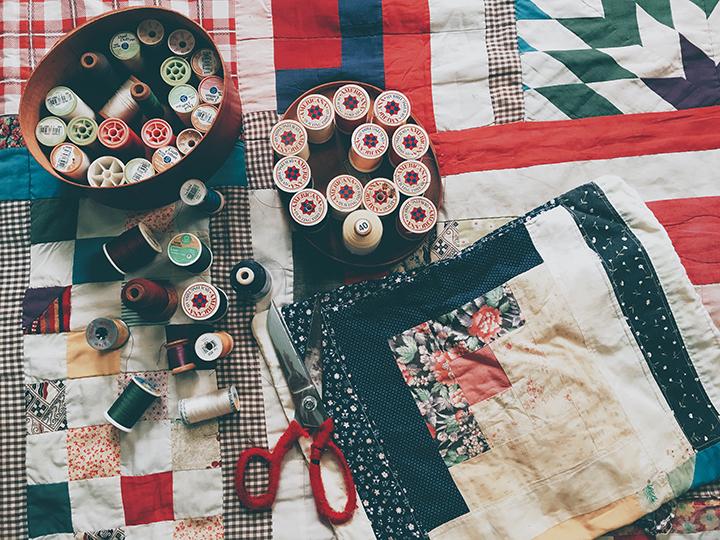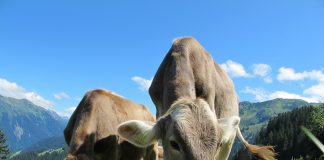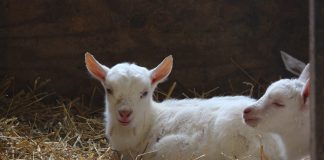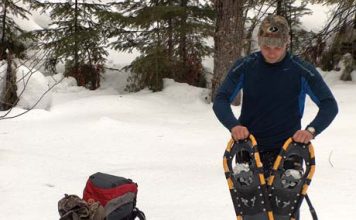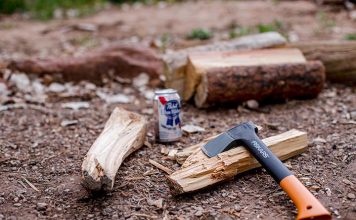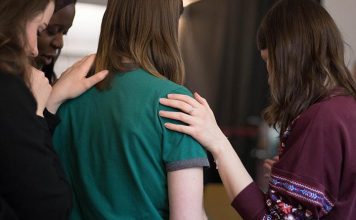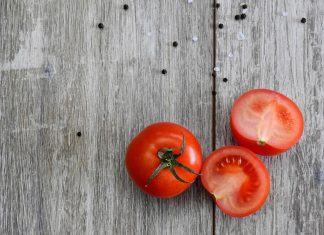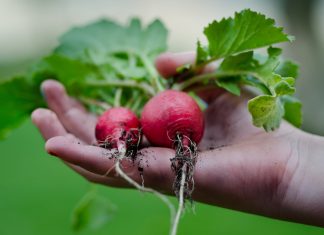 |
|
| Issue #83 • September/October, 2003 |
During my last year of teaching school, I was pregnant with Jacob. I’ll always remember receiving a beautifully crocheted baby blanket that one of my student’s mothers made for me. So when I heard that middle son, Robby’s teacher was going to have her first baby this past school year, I immediately imagined her delight in receiving a baby blanket made, in part, by her adoring class.
Most mother’s days are filled with activity and not a whole lot of time to sit around and stitch, and I’m no different in that department, so when planning this quilt I knew that I needed to come up with a design that would be simple enough for me to complete the project in just a few days. (Besides, the end of the school year crept up and I needed the students’ art work for this project.) Here’s how my novice sewing abilities turned this idea into a completed baby quilt.
|
I knew that I wanted each student to take a square of fabric and draw a design using fabric pens. My friend, Rhoda, was the substitute for the class for the last month of the year. So when she and I were going to buy the fabric for the top layer of the quilt, she said, “Since there are 27 kids in the class, let’s have each student pick a letter of the alphabet and draw pictures that go with their letter.” With only 26 letters to go around, we thought that one student with good handwriting could write out “To Mrs. Margolis, from your 4th grade class.”
In order to plan out the pieces to be cut for the quilt, I used graph paper and sketched out a simple log cabin design using squares and rectangles. During the planning stages, I didn’t know the sex of the baby, so yellow, green, and a baby hand-print fabric were the prominent colors for the borders of each square rather than blue or pink. Each log cabin square consists of a 6″ square of fabric with a 6″ x 3½” rectangle sewn to the bottom of the square and a 3½” x 8½” rectangle sewn to the right of the previous two pieces. Here, it’s important to note that I used a ½” seam allowance for all seams for the top layer of the quilt. The finished design has 5 log cabin squares across and 6 going down the quilt for a total of 30. The students used 27 of the squares and the remaining 3 were designed by the 2 substitutes for the class and me.
The following is a list of the materials I used to make the quilt:
- 30 6″ squares of fabric
(9 pink, 9 blue, 6 yellow, and 6 green) - 1 1/3 yards of 45″ fabric for the back of the quilt
(I had loads of a baby hand-print fabric on hand that I had previously purchased) - 25 rectangles of fabric, 6″ wide by 3½” high
(13 baby print, 6 yellow, and 6 green) - 4 rectangles of fabric, 3½” wide by 6″ high
(2 baby print, 1 yellow, and 1 green) - 20 rectangles of fabric, 3½” wide by 8½” high
(10 baby print, 5 yellow, and 5 green) - enough quilt batting to fill a 40″ by 44″ blanket
- enough of the baby print fabric to cut 4 strips of fabric, each 2″ wide for the binding of the quilt
(2 strips 45″ long, 2 strips 41″ long)
Being a novice seamstress, the procedure for putting it all together was quite simple. I measured and carefully cut all the squares and rectangles. After all the artwork was completed on the fabric squares, it was time to stitch. Using my design on graph paper as a guide, I sewed the bottom of the first square to its corresponding 6″ wide by 3½” high rectangle, then ironed the seams open. In fact, I was diligent about ironing all the seams open right after sewing them. A long
|
rectangle (3½” wide by 8½” high) was sewn to the right of the previously sewn pieces to form the first log cabin square. Again, I referred to my graph paper guide to make sure I had the correct color for each rectangle before sewing. I sewed together all 30 log cabin squares and placed them in order in a stack.
The next step was to sew the top 5 log cabin squares together, then the second row, etc., until I had all 6 rows sewn together. Of course, the last step in the piecing of the quilt was to sew the 6 strips of rows together, from the top of the quilt to the bottom. In one evening I had the whole top layer pieced.
My next step was to get Dave to take the boys to school the next morning so I could play hookie from my magazine duties in order to have time to complete the quilt during daylight hours. First I cut the fabric for the bottom layer of the quilt. I cut it so it was about two inches larger on all four sides than the top layer. I cut the batting so that it would also have about two more inches on all four sides than the top layer.
|
I cleaned off my kitchen table to use as a nice flat surface in order to baste all three layers together. I layed out the bottom layer, right side of the fabric facing the table, then the batting, then the pieced, top layer with the right side facing up. I used a needle and long pieces of thread to hand baste all three layers together. I had read in a quilting book that it’s a good idea to leave the extra margin of the batting and bottom layer of fabric before quilting, as the process of quilting the three layers together has a tendency to cause the top layer to be slightly different in size after stitching.
I decided to do all the quilting using my sewing machine, rather than by hand. I also knew I wanted to avoid quilting on the students’ artwork, so I kept all the quilting stitches on the border pieces.
After all three layers were completely quilted together, I cut the batting and bottom layer to be the same size as the top layer. Then I took out all the threads from the basting.
The last step was to attach the binding around all four edges. I cut the four 2″ strips of fabric for the binding, then sewed the corners together on the diagonal to form what looked like a picture frame the same size as the quilt, then pressed the seams open. I pressed under the raw edges of the binding strips 3/8″ on each side and machine-stitched the binding to the top of the quilt, right sides together. I folded the binding to the back side of the quilt and hand-stitched the ironed down edge in place.
The finished project just needed to be washed before delivery to baby Marisa.


